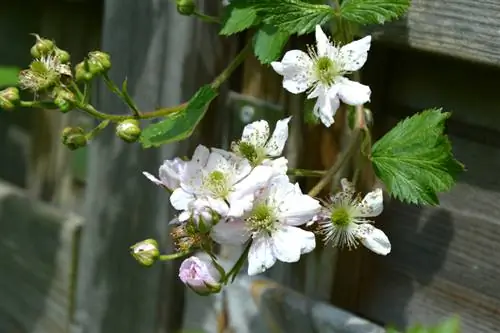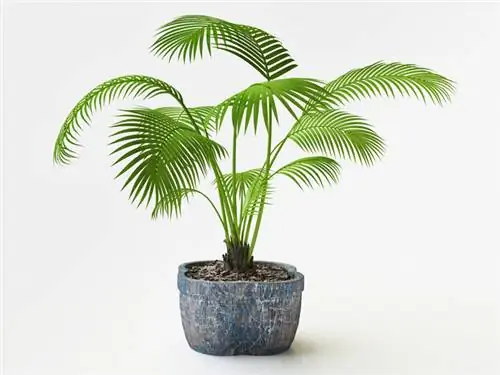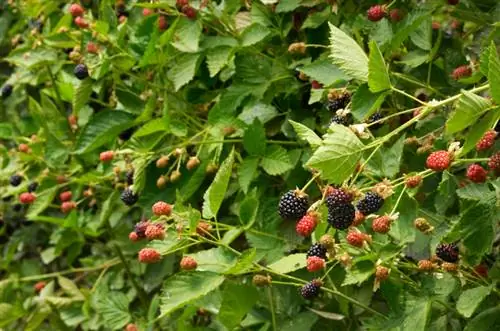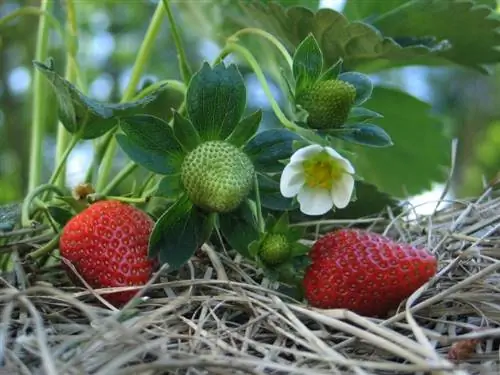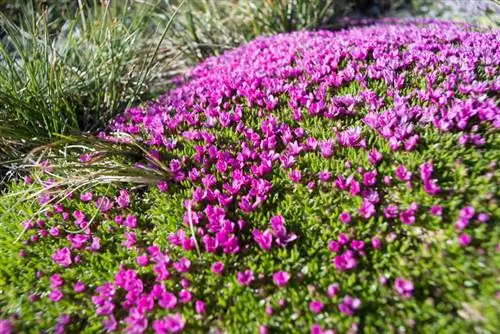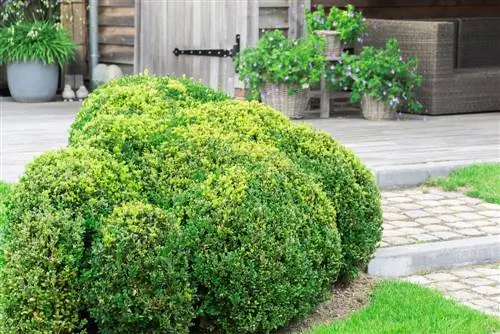- Author admin [email protected].
- Public 2023-12-16 16:46.
- Last modified 2025-01-23 11:19.
Blackberries are one of the rather undemanding plants in the local flora. While removing wild blackberries can be a challenge, cultivated varieties produce aromatic fruits even with little care.
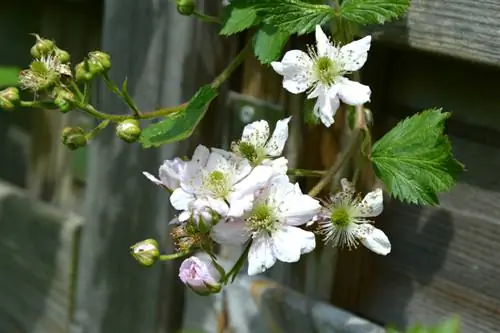
How do I successfully plant blackberries in the garden?
To plant blackberries in the garden, choose either wild blackberries for natural gardens or thornless cultivated varieties for larger fruits. Prepare the soil by loosening and fertilizing it. Guide the vines along a trellis to control growth and make harvesting easier.
Wild blackberries for the natural garden
Wild blackberries often impress with a particularly fruity and spicy taste that cultivated garden varieties without thorns can hardly keep up with. So before planting, you should consider whether you might want to rely on the unbridled growth power of wild blackberries in a more natural garden. Although their fruits are generally rather smaller, the rampant spread of the plants often results in a respectable yield in a small area. You can usually find offshoots of wild blackberries on roadsides and embankments; these usually do not cause any problems growing. However, be aware that regular pruning of these types of blackberries is necessary if you do not want them to spread to the entire garden.
Planting cultivars and harvesting large blackberries
Modern breeding of blackberries offers the advantage that they produce fruits with a particularly deep black color and particularly large fruits. The fact that many of these cultivars have now been bred as blackberries without thorns protects them from scratches and painful injuries during the ripening period. Before planting blackberries, the soil at the planned location should be loosened well and manure or compost added for fertilization. This allows the blackberry roots to branch out well and ensure rapid growth.
Direct blackberries in certain directions
The thick tendrils of blackberry bushes sometimes reach up to three or four meters in length. To ensure good accessibility when cutting and harvesting, a trellis shape is recommended. To do this you will need the following materials:
- several wooden stakes or straight branches
- Tension wires
- Binding raffia or coconut string
Ram the wooden stakes into the ground and attach the tension wires to them transversely, 20 to 30 centimeters apart. Then guide individual tendrils along these and secure them with some raffia or coconut string.
Tips & Tricks
A trellis made of blackberries not only looks beautiful, its air- and light-permeable shape also protects the blackberry plants from some diseases.

